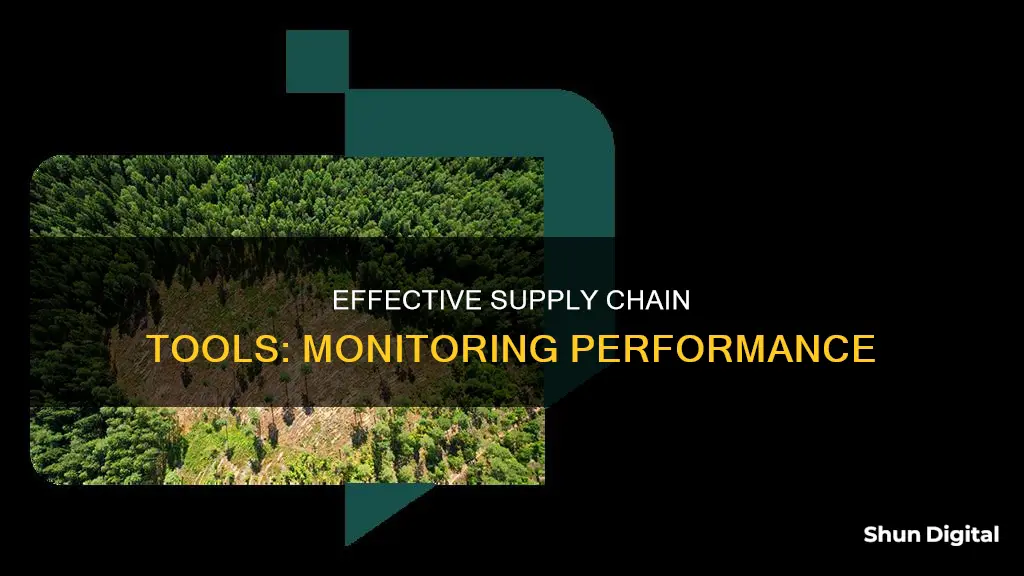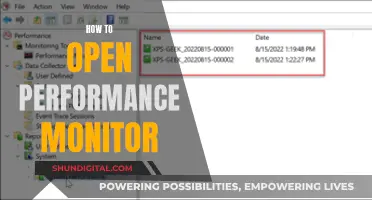
Supply chain management tools are essential in today's fast-paced and ever-changing business environment. With the right tools, businesses can effectively manage logistics, inventory, and supplier relationships, ensuring smooth and efficient operations. Here are some of the top supply chain performance monitoring tools available:
- Oracle SCM Cloud: A cloud-based platform that integrates multiple processes and provides end-to-end supply chain visibility. It includes applications for Product Innovation, Strategic Material Sourcing, Adaptive Manufacturing, Integrated Logistics, and Omnichannel Order Fulfillment.
- Blue Yonder: Offers extensive tools for transportation, storage, and inventory management. It provides a comprehensive end-to-end execution platform, enabling flexible and autonomous distribution networks.
- SAP SCM: Integrates predictive analytics and artificial intelligence to establish optimal planning strategies. It helps improve supply chain responsiveness and enables firms to manage demand effectively.
- Dynamics 365 SCM: Prioritizes visibility and control across the supply chain network with predictive analytics, IoT integration, and real-time insights. It enables autonomous systems to self-monitor, detect issues, and take corrective action.
- Epicor SCM: Streamlines and improves all aspects of supply chain management, including demand planning, procurement, inventory control, and logistics. It ensures a smooth flow of information and materials, enhances communication, and improves customer experience.
- Resilinc: Allows for mapping and visualization of multiple tiers of global supply chains, provides alerts on disruptive events, and enables direct communication with suppliers.
- Sourcemap: A supply chain visualization engine that makes sense of large datasets, covering every tier from raw materials to distribution and every transaction.
- DHL Resilience 360: A supply chain risk management software platform that helps businesses predict, assess, and mitigate the risk of supply chain disruptions by providing near real-time monitoring of incidents.
- riskmethods: Proactively identifies, analyzes, and mitigates supply chain risks, turning risks into opportunities. It offers 24/7 risk monitoring, early warning signals of disruptions, and risk scoring and mitigation plans.
| Characteristics | Values |
|---|---|
| Surveillance monitoring system | Tracks the movement of goods, products, employees, suppliers and customers through your supply chain network |
| Provides real-time updates about activities taking place in your supply chain network | |
| Identifies gaps in your supply chain network and helps take necessary actions to fix them | |
| Can be used to find out about security breaches or threats to business operations | |
| Predictive systems | Forecast demand, manage inventory and supply levels, and predict customer behaviour to improve efficiency and reduce costs |
| Can be used to ensure products are being used by the right customers | |
| Can prevent fraud by flagging suspicious activity | |
| Can identify new opportunities for growth and profitability | |
| Supply chain management software | Allows you to create a database that tracks suppliers, their locations, and what they produce |
| Can be used to analyse how long it takes for products to get from one location to another | |
| Can help identify delays or problems related to certain suppliers or locations | |
| Operating in real time | |
| Can be used by companies with multiple warehouses or distribution centres |
What You'll Learn

Surveillance monitoring systems
One way to reduce costs is to use a video compressor to reduce the storage space needed for CCTV footage. An mp4 compressor, for example, can shrink video files while maintaining their quality.
In addition to real-time monitoring, surveillance monitoring systems can also provide predictive capabilities. Predictive systems use historical data to make predictions about future events, such as forecasting demand, managing inventory, and supply levels, and predicting customer behaviour. By analysing patterns in historical data, these systems can identify potential issues and make more efficient decisions.
Overall, surveillance monitoring systems are a powerful tool for supply chain management, providing visibility, security, and insights that can help businesses optimise their operations.
Blind Spot Monitoring: A Standard Feature in Teslas?
You may want to see also

Predictive systems
The goal of a predictive system is to forecast demand, manage inventory and supply levels, and predict customer behaviour to improve efficiency and reduce costs. They can also be used to ensure products are being used by the right customers and not sitting on shelves, prevent fraud by flagging suspicious activity, and identify new opportunities for growth and profitability.
These systems rely on historical data from the past six months or more to develop algorithms that detect patterns in the data. For example, if a company has a large number of orders from one customer every month but none in May, a predictive system will flag this as something that needs further investigation.
- Demand Forecasting: Predictive analytics enables businesses to improve demand forecasting by studying previous and present trends and anticipating demand using market information and economic predictions.
- Predictive Pricing Strategies: By anticipating product demand, it is possible to dynamically change pricing according to market and economic conditions.
- Inventory Management: Predictive analytics enables supply chain managers to estimate exact inventory requirements by area, location, and consumption, reducing safety stock levels and placing inventory exactly where it is needed.
- Manufacturing Process: Predictive analytics can identify bottlenecks, predict equipment failures, and improve overall efficiency in manufacturing processes.
- Managing Supplier Performance and Reducing Risks: Predictive analytics can identify potential bottlenecks, delays, or quality issues in supplier performance, allowing supply chain experts to take decisive measures such as renegotiating contracts or implementing contingency plans.
- Logistics and Transportation Management: Predictive analytics can optimize transportation routes and schedules, track and monitor shipments in real-time, and identify potential issues in logistics before they occur.
When implementing predictive analytics in supply chain management, it is important to consider the following:
- Data quality and availability: Predictive analytics works best with accurate, complete, and error-free data. Integrating data from various sources is also important for creating a comprehensive dataset.
- Data privacy and security: Protecting sensitive data and ensuring compliance with data governance policies and regulations is crucial.
- Organizational resistance and change management: Gaining buy-in from stakeholders and ensuring effective communication and training for employees is essential to overcome resistance to change.
- Continuous improvement and optimization: Predictive analytics models must be regularly assessed, refined, and updated based on new data and insights to ensure accuracy and effectiveness.
- ROI: Implementing predictive analytics may require significant investment in infrastructure, technology, and personnel, so carefully considering the potential return on investment is important.
Overall, predictive systems are a powerful tool for supply chain performance monitoring, providing valuable insights and helping companies make proactive decisions to stay ahead of the competition.
Best Places to Buy Alienware Monitors
You may want to see also

Supply chain management software
Functionality
Benefits
This software improves supply chain visibility, enabling businesses to make informed decisions. By tracking products' movement, businesses can identify and address issues, such as delays or supplier-related problems. Additionally, it helps maintain proper inventory levels, reducing the chances of overstocking or stockouts. The software also enhances collaboration and communication between different departments and suppliers, improving overall operational efficiency.
Examples
There are several supply chain management software solutions available, each with unique features catering to specific business needs. Examples include GoComet, Oracle SCM Cloud, Epicor SCM, Blue Yonder, and SAP SCM. GoComet, for instance, is ideal for businesses aiming to enhance logistics and end-to-end supply chain management, while Oracle SCM Cloud suits businesses of all sizes seeking to streamline operations and improve efficiency. Blue Yonder, on the other hand, specialises in supply chain planning and execution, offering powerful tools for demand forecasting and inventory management.
Selection Criteria
When choosing supply chain management software, businesses should consider specific criteria to ensure the selected tool provides real value. The software should have a user-friendly interface, be scalable to accommodate business growth, and offer real-time visibility into the supply chain. Integration capabilities with existing systems, customisation, reliable customer support, robust security features, and return on investment are also key considerations.
In conclusion, supply chain management software is a powerful tool that helps businesses effectively manage their supply chain operations, make data-driven decisions, and ultimately improve their efficiency and responsiveness to market changes and customer demands.
Waste Anesthetic Gas Monitoring: How Often is Enough?
You may want to see also

Real-time tracking
GoComet
GoComet is an AI-powered global supply chain platform that automates the entire supply chain, from procurement to delivery. Its real-time tracking feature offers complete visibility, enabling businesses to monitor shipments at every stage, anticipate potential delays, and respond promptly. GoComet also provides advanced analytics to help businesses optimise routes, reduce costs, and streamline operations.
Project44
Project44 is a supply chain visibility platform that focuses on real-time tracking and data sharing. It integrates with multiple transportation management systems and provides comprehensive updates on delivery status, reducing uncertainty and enabling proactive management. Project44 enhances collaboration between suppliers, carriers, and customers, ensuring effective logistics processes.
FourKites
FourKites offers real-time supply chain visibility, connecting with multiple data sources to track shipments and inventory efficiently. It enables collaboration between suppliers, carriers, and customers, and its machine learning-driven predictive analytics capabilities allow businesses to forecast supply chain issues and develop contingency plans.
Oracle SCM Cloud
Oracle SCM Cloud is a comprehensive supply chain management suite that includes inventory management, order fulfilment, and product lifecycle management. Its cloud-based structure allows for easy updates and access from anywhere, and its strong integration capabilities enable connection with other Oracle products and third-party applications. While it offers valuable analytics and reporting features, Oracle SCM Cloud has a complex interface and a steep learning curve for new users.
Epicor SCM
Epicor SCM is a platform that streamlines the supply chain process, from procurement to production and distribution. It enhances visibility and collaboration across the supply chain and enables businesses to react quickly to changes in demand or supply. Epicor's analytics capabilities provide real-time data-driven insights to support decision-making. However, it has limited integration options and can be expensive for small businesses.
Blue Yonder
Blue Yonder is a supply chain planning and execution platform that provides demand forecasting, inventory management, and logistics optimisation tools. Its machine-learning capabilities help businesses adapt to changing market conditions and make informed decisions. Blue Yonder's user-friendly interface simplifies complex tasks, but it has a high cost and may require time for initial setup.
SAP SCM
SAP SCM is a suite of integrated applications for managing supply chain processes, including demand planning, supply network planning, and logistics execution. It excels in data integration, enabling real-time information sharing, and its analytics features provide insights into performance metrics. However, SAP SCM is known for its premium pricing, and the setup and integration process can be complex and time-consuming.
Kinaxis RapidResponse
Kinaxis RapidResponse is a platform that focuses on supply chain planning and response management, allowing businesses to react quickly to changes. It offers real-time supply chain visibility and scenario planning capabilities, helping companies prepare for potential disruptions. While it is a powerful tool, Kinaxis RapidResponse may be more suitable for larger enterprises due to its high cost and limited third-party integrations.
These tools, with their real-time tracking capabilities, can help businesses optimise their supply chain operations, make data-driven decisions, and enhance their responsiveness to disruptions and market changes.
Ultimate Guide: Choosing the Right Monitor
You may want to see also

Demand forecasting
Demand planning software is a tool that helps businesses forecast demand and plan their supply chains accordingly. Examples of demand planning software include:
- Blue Yonder: A demand planning tool that helps businesses spot problems quickly, boost collaboration, offer scenario testing and predict results.
- Oracle Demand Management: A demand planning tool that helps businesses dealing with demand variability, new product introductions and configured products.
- SAP SCM: A versatile demand planning tool that caters to a wide range of industries, including consumer products, retail and manufacturing.
- Logility: A demand planning tool that uses AI algorithms to analyse historical sales data, market trends and external factors to generate precise forecasts.
- Dynamics 365: A demand planning solution that uses advanced algorithms and machine learning techniques to analyse historical data and predict future demand.
- Historical Data Method: Analysing past sales data to get a baseline prediction.
- Market Research and Delphi Method: Collecting data directly from consumers and market experts to gain insights into consumer demand and market trends.
- Demand Sensing Method: Using machine learning to capture real-time variations in purchase behaviour, enabling the supply chain to respond quickly to demand changes.
- Predictive Sales Analytics Method: Using machine learning and advanced IoT to estimate demand and understand the factors that drive sales and consumer behaviour.
- External Macro Forecasting Method: Analysing trends in the broader economy to determine how they will affect business goals and manufacturing capabilities.
Privacy Concerns: Hotels Monitoring Guest Internet Activity?
You may want to see also
Frequently asked questions
Supply chain performance monitoring tools include surveillance monitoring systems, predictive systems, and supply chain management software.
Surveillance monitoring systems help monitor the activities of employees, suppliers, and customers in real time, identify gaps in the supply chain, and ensure security.
Predictive systems use historical data to make predictions and improve efficiency. They rely on data from the past six months or more to develop algorithms that detect patterns and predict future events.
Supply chain management software helps create an organized system to track suppliers, their locations, and products. It also aids in analyzing transit times, identifying bottlenecks, and addressing issues quickly.







